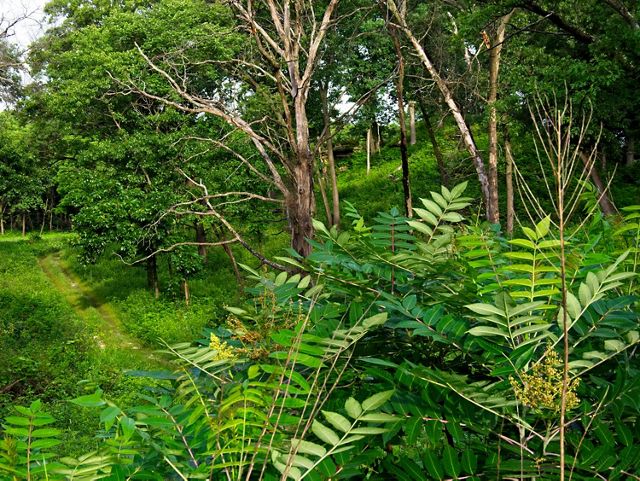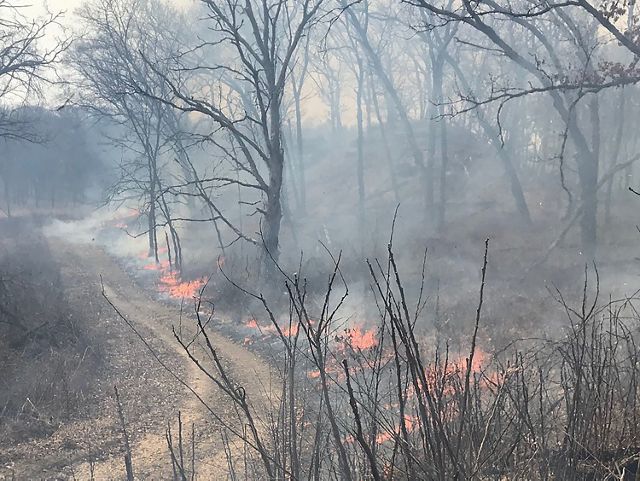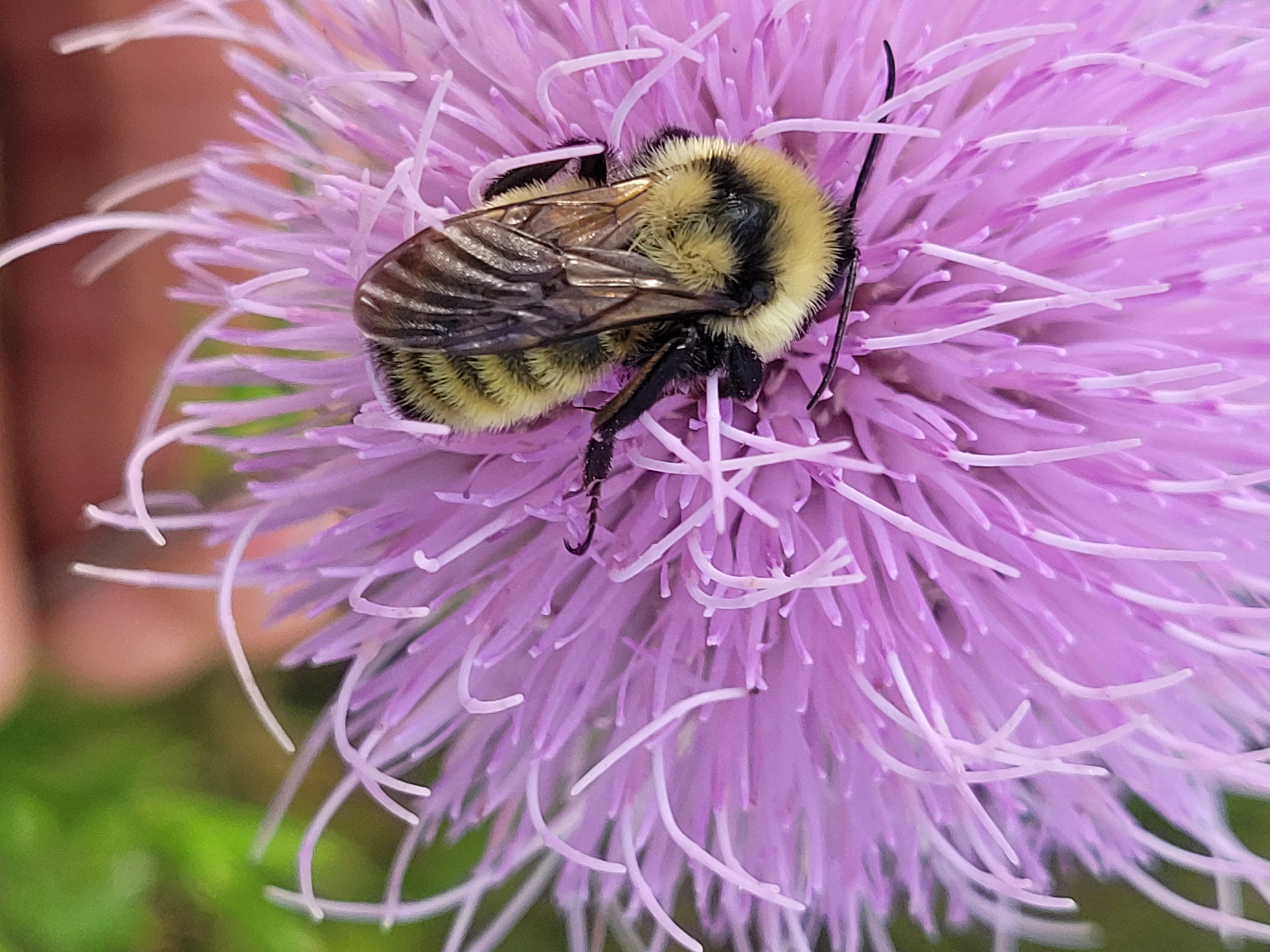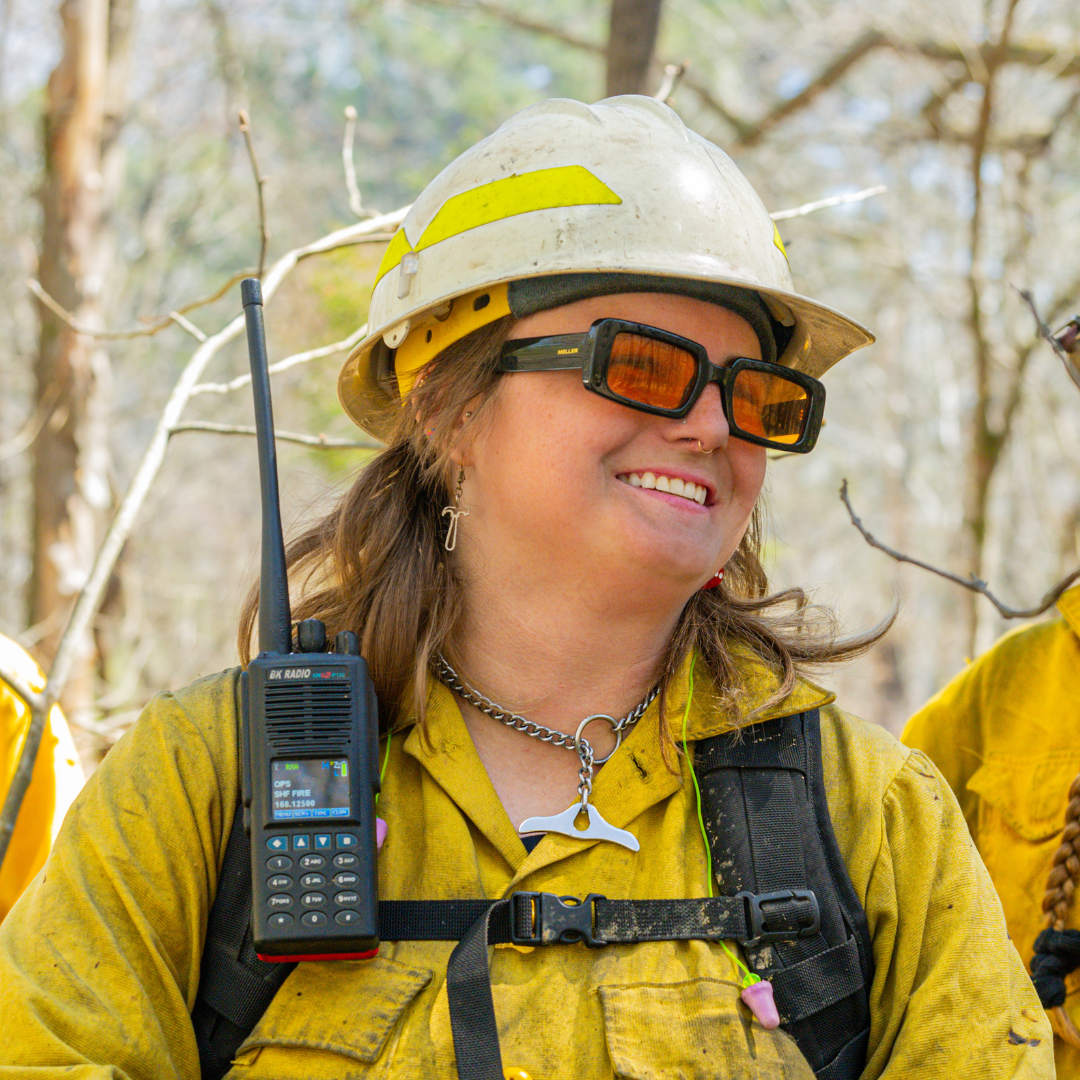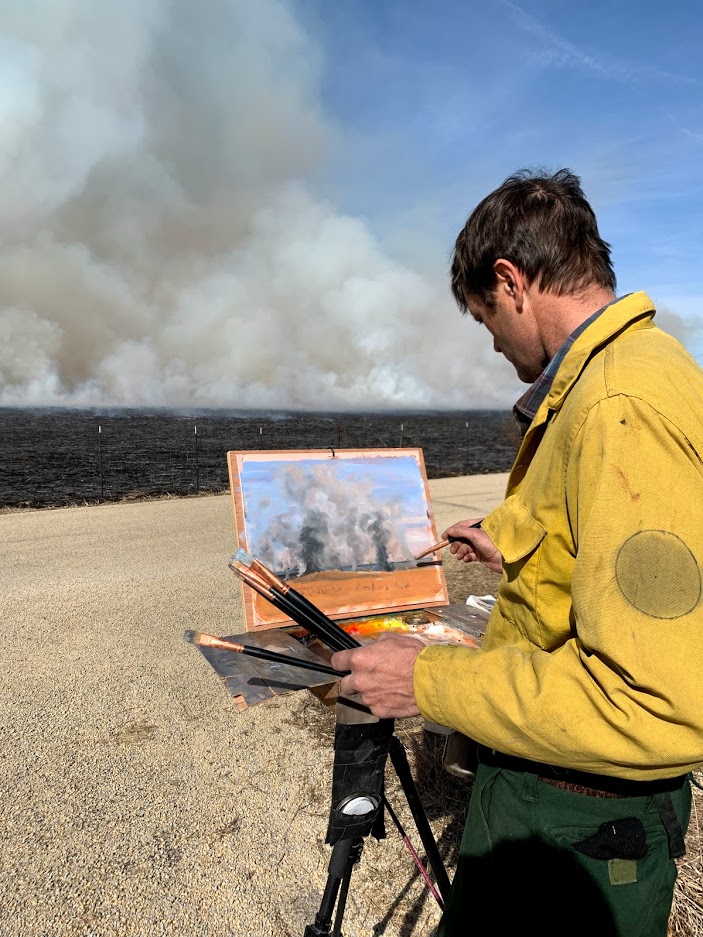Indigenous peoples used fire in prairies and other grasslands to encourage new plant growth and lure bison and other game for hunting. Borrowing from that tradition, TNC has been using prescribed fire for more than 60 years to keep a variety of native habitats resilient and strong. Prescribed fire helps keep aggressive invasive species in check, including buckthorn, multiflora rose and honeysuckle, while encouraging growth of native plants and supporting the regeneration of oak and hickory, the dominant trees of the Midwest.
Quote: Bill Kleiman
If we don’t use fire, our prairies, wetlands and oak woodlands become choked with dense brush—exotic shrubs and small trees—that end up degrading native habitat for lack of sunlight.
Fire as a Restoration Tool
Prescribed fire is one of the most important tools in TNC’s restoration box. In addition to helping control invasive plants and trees, fire can improve soil health by recycling nutrients from charred plants. Many landscapes have also been shaped by flames, and some wildlife species have come to rely on fire to assist in their survival.
Another key benefit of prescribed fire is that it helps prevent wildfires from spreading and causing catastrophic damage. By safely getting rid of brush, leaf litter and downed branches, a controlled fire can reduce the amount of combustible material in a wildfire’s path.
Species that Depend on Fire
Here are five examples of wildlife species that have evolved with fire and depend on habitats that prescribed fire can help restore and support.
Here in Illinois, TNC has taken on a leadership role to help expand the use of “good fire.” In early spring and late fall, our burn crews can be seen preparing for and setting prescribed fires on TNC preserves. They also help our conservation partners, including government land agencies and private landowners, with controlled fires on public and private lands in Illinois and across the Midwest.
For instance, our southern Illinois team works hand-in-hand with the U.S. Forest Service, the U.S. Fish and Wildlife Service and the Illinois Department of Natural Resources to manage prescribed fires in national forests, wildlife refuges and state parks in Illinois, Wisconsin and other states. In 2023 alone, the southern burn crew helped burn 12,350 acres on partner sites—which is more than 19 square miles.
Ensuring Fire Safety
Many of the questions TNC gets around prescribed fire relate to safety. You can rest assured, TNC and our partners go out of our way to prevent harm to both people and wildlife.
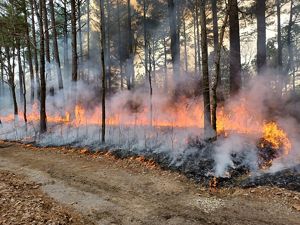





Firebreak: An example of a firebreak, or strip of bare soil, that prevents flames from spreading. In this case, the firebreak is a preexisting road. © Nathan Speagle/TNC

Wet Line Firebreak: An alternative to natural fire breaks are wet lines, or mowed lines with water sprayed on them to keep fire immediately ignited just inside the wet line. © Dee Hudson

Team Meeting: A team briefing to review roles and responsibilities as well as site details is essential before a prescribed burn to assure the safety of the crew. © Dee Hudson

Pack Test: All burn crew members and volunteers must pass a series of annual physical fitness tests like the pack test, a 3-mile hike over level terrain carrying 45 pounds. © Dee Hudson

Elizabeth Bach Raking: Raking away litter and duff around the base of trees helps to reduce tree mortality during prescribed burns. © Dee Hudson
Ensuring good fires don't turn into dangerous wildfires
To ensure safety as well as effectiveness during prescribed fires, TNC has adopted fire standards set by the National Wildfire Coordinating Group. To become licensed burn crew members or managers, our staff and volunteers must obtain the same strenuous training and certifications as federal wildland firefighters.
All of our staff and volunteer fire crews have been trained to mitigate potential risks. For example, they clear the ground to create firebreaks, or strips of bare soil, which prevents flames from escaping the boundary of the area to be burned and helps keep burn crews safe. Considering wind direction and speed and other weather conditions also reduces smoke that may compromise air quality.
All our crews are also supervised by a fire manager (or burn boss). It takes 10+ years of experience and training in various types of fire scenarios to earn a burn boss certification. It’s the equivalent of earning a PhD in fire.
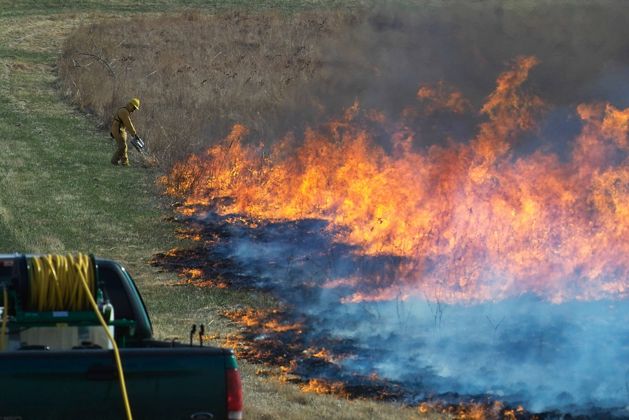
We Can’t Protect Nature Without You
Sign up to receive monthly conservation news and updates from Illinois. Get a preview of Illinois’ Nature News email.
Protecting animals, birds and other wildlife
As a long-time steward of nature, TNC always considers how wildlife—including birds, animals and plants—will be affected by our restoration work.
Many native wildflowers and grasses in Illinois have deep root systems. For example, the roots of a prairie blazing star can extend 16 feet into the soil. Fire may burn the plants’ leaves, stems and flowers. But the plants will then resprout afterwards. Many of our native trees also have a defense against fire: thick bark.
But what about animals and birds? We plan our prescribed fires to minimize any harm to these and other creatures. For instance, we conduct burns on relatively small plots of land so that any animals and birds can quickly run or fly to a nearby safe area. In addition, we set prescribed fires in early spring and late fall to avoid mating and nesting seasons and to ensure that smaller reptiles, such as snakes and turtles, are dormant and safely burrowed underground or beneath rocks or logs.



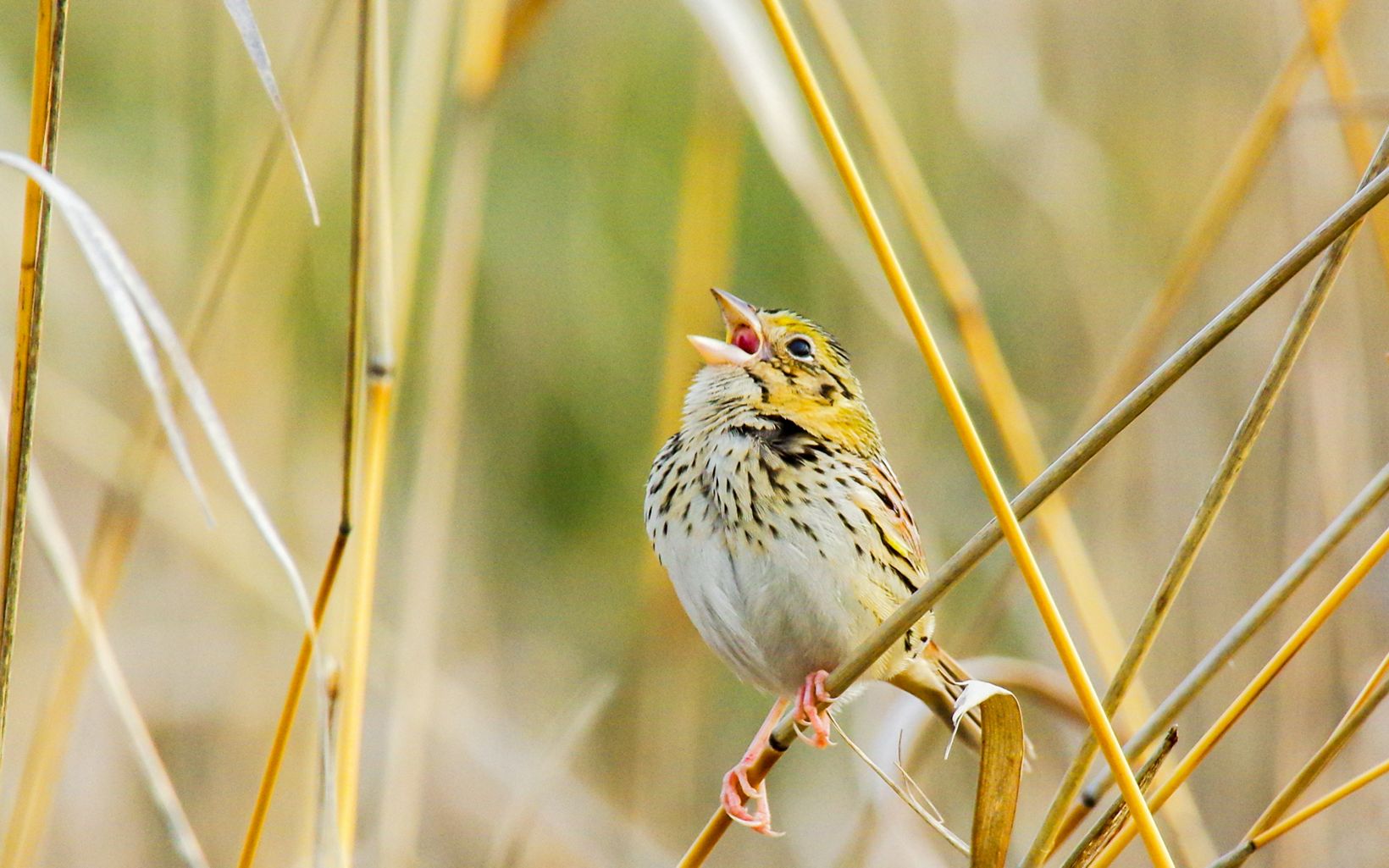

To learn more about how to protect wildlife, TNC participated in research about the burrowing habits of ornate box turtles. The study, led by researchers from the University of Illinois Urbana-Champaign, involved radio-tracking 47 ornate box turtles at TNC’s Nachusa Grasslands and two other natural areas from 2019 to 2022. The research found that the turtles are almost guaranteed to be underground from Nov. 1 through April 1.
“We need prescribed fire for healthy habitats, and we need to protect box turtles,” says Elizabeth Bach, ecosystem restoration scientist at Nachusa, who contributed to the research. “This paper gives Illinois managers some specific dates and parameters to make choices about how to prioritize prescribed fire in units where there may be box turtles.”
Using Science to Protect Rare Turtles During Burns
To learn more about how to protect wildlife, TNC participated in a University of Illinois study about the burrowing habits of ornate box turtles.
-
47
The study involved radio-tracking 47 ornate box turtles at TNC’s Nachusa Grasslands and two other natural areas from 2019-2022.
-
Nov-Apr
The research found that the turtles are almost guaranteed to be underground from Nov. 1 through April 1.
-
<59° F
If air temperature is less than 59 degrees F prior to Nov. 1, a fall fire may be safe in turtle habitats.
-
<50° F
If air temperature is less than 50 degrees F after April 1, a spring fire can still be safe for turtles.
Meet the Crew
TNC's fire crew and volunteers are spread across the state. Meet a few of them by clicking on their profiles below.

Providing Fire-Training Opportunities
Get Involved
Looking for more information on how to volunteer or get training in prescribed fires?
Contact Us for DetailsRecognizing the importance of prescribed fire in ensuring the health of natural areas, TNC in Illinois aims to gradually increase the number of acres burned in the state and across the Midwest.
But there’s one challenge to expanding the use of this tool: A shortage of trained fire crew and volunteers. “It’s a huge hurdle to get enough people trained in prescribed fire, which is a critical tool to keeping our native habitats healthy,” says TNC’s Rob Littiken, project director at Kankakee Sands Preserves-Illinois.
TNC is helping to meet this resource challenge by providing a variety of training opportunities.
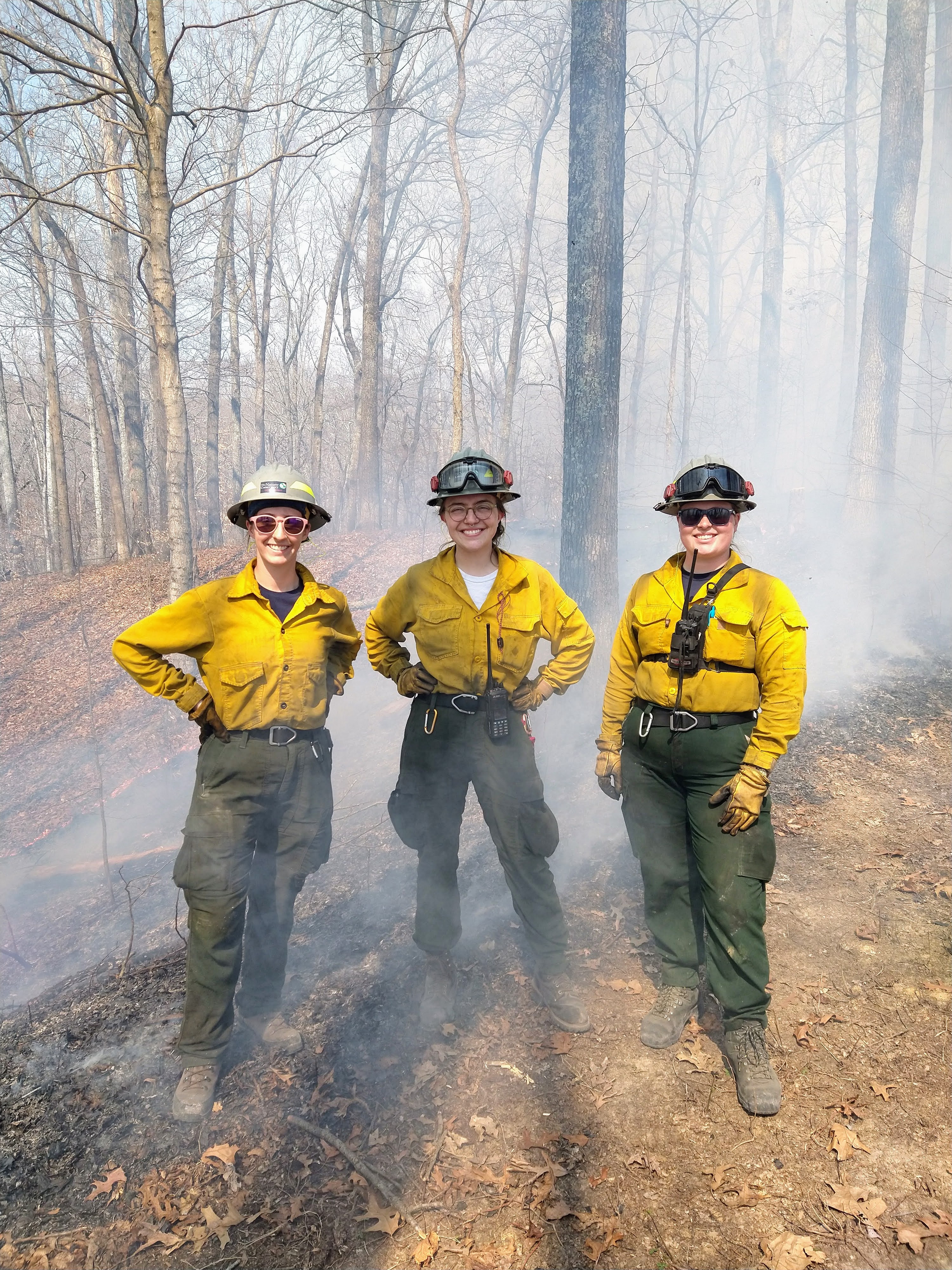

Belize Training
Another way TNC is helping burn crews and managers gain needed skills and licenses is by offering a wildfire suppression training program in Belize, in partnership with TIDE Belize and Belize National Parks. About 20 people from TNC and other groups throughout the United States and Belize participate every year, getting hands-on experience putting out wildfires in the dry pine savannahs and open grasslands of Belize’s national parks. “The Belize training has helped us train a lot more burn managers, which makes it possible for us to expand the use of prescribed fire to help restore prairies, woodlands and other natural areas,” says TNC’s Rob Littiken, project director at Kankakee Sands Preserve in Illinois.
CLOSE TO THE FLAMES (07:36) This year's fire suppression workshop, hosted by TNC Belize in February of 2024, was a great opportunity for Illinois burn leaders like Nathan Speagle to better apply fire to lands back home. Hear about Nathan's experience in this recap video Close to the Flames from Creative Nature.
Advancing and Advocating for Prescribed Fire
TNC in Illinois played a role in ensuring the passage of the Illinois Prescribed Burning Act, which established prescribed fire as a key conservation tool. The law also set important standards to ensure the safety of prescribed fires, including the need to have at least one certified burn manager (aka burn boss) present at all burns and the importance of having a written plan for how the fire will be managed and approved by a burn boss.
Our advocacy work related to prescribed fire continues. Two TNC burn bosses—Kleiman and Littiken—serve as directors on the Illinois Prescribed Fire Council. A key council project is focused on mapping where all prescribed burns are performed in Illinois and assessing how many more acres need to be burned to improve ecosystems.
On the research side, TNC scientists and partners are studying how to increase the effectiveness of prescribed fire. The ongoing research aims to uncover, for example, how adjusting the timing of fires can further improve habitat health.
State-wide Burn Map
The Illinois Prescribed Fire Council regularly tracks prescribed burns accomplished across the state, including TNC's, on this state-wide map accessible online. Illinois is one of the only states in the U.S. with a fire-tracking resource such as this one.
Searchable Burns
Take a moment to explore the variety of prescribed burns being conducted across the state using the Illinois Prescribed Fire Council's online interactive map, where you can search for specific preserves using good fire near you or use the zoom functions to explore the controlled fires being conducted in specific geographical areas.

